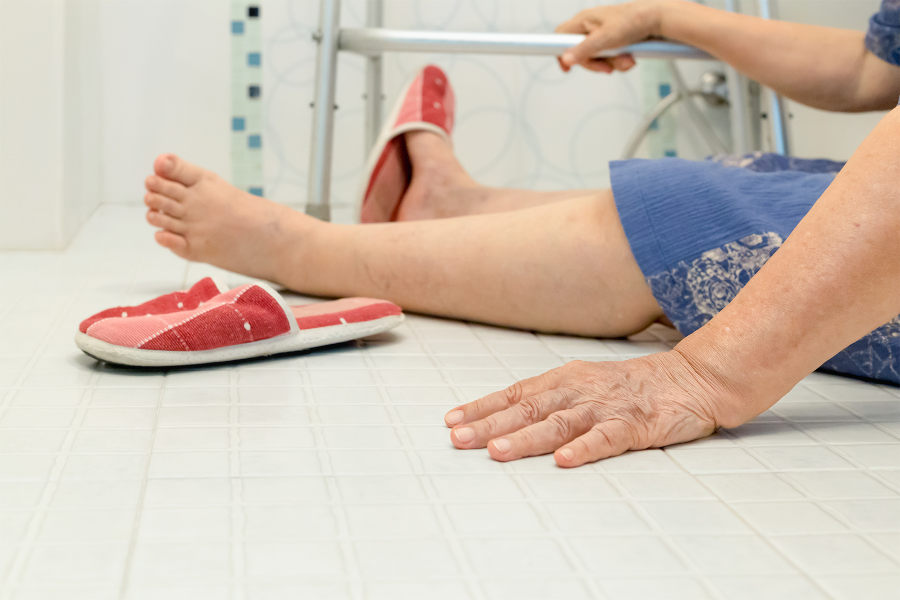The bathroom ranks amongst the worst rooms in the home for domestic injuries, with people over 70 years of age most at risk of an injury. Most of these injuries occur when exiting the bath or shower, primarily because of the trip hazard high shower steps and bath sides present, combined with the presence of water which can cause nasty slips and falls.
Given that the bathroom contains hard objects such as sinks, WC’s and taps an injury can be quite severe and may require hospitalisation. It therefore makes good sense to take a critical look at a bathroom used by a person with reduced mobility to identify ways of making it less hazardous. In the first instance, some simple changes can improve safety.
Anti-slip bath mats
These mats lie inside the bath tub or shower and fix securely to the bath or shower surface by way of suckers. The top of the mat should have good anti-slip properties, ideally one that complies with the British Standard 8445. This will ensure the product offers a greater level of protection against possible slips. One manufacturer that does comply with BS 8445 is Aqualona and you can find their bath mats on Amazon.co.uk – take a look at their range here http://www.aqualona.com/bath-shower-mats/
Though many people like a warm, dry, fluffy mat to step onto after their bath or shower, it can slip against tiled or vinyl floors. This trip hazard should be removed and replaced with one that has sufficient anti-slip properties that will assure yourself it will remain secure.
Dispensers and organisers
Dispensers and bathroom organisers are a great way of dealing with bathroom clutter, the usual conglomeration of shampoo and shower gel bottles, soaps, sponges, brushes and so on. All of these items can be hazardous as they may be knocked to the floor causing someone to lose their footing or prevent someone grabbing hold of a surface if they stumble. Bars of soap can be especially tricky in these situations as they are slippery by nature, so switching to liquid soap in a dispenser with a pump on it will remove this risk. Organising caddies can be mounted on the wall, keeping shampoos, sponges and other items within easy reach but away from surfaces.
Walk in bath or accessible shower
If the above is not enough to make the bathroom feel safer, it is time to get serious about making practical changes to the bathroom with something like a walk-in bath or easy access shower.
A walk-in bath can be easier to enter and access than a standard bath as the door reduces the threshold to step over significantly. Optional lifting seats make getting up and down in the bath easier. Or to keep things simple, you can opt for a short length tub with a moulded seat, which is like sitting in a chair whilst in the bath, making it easier to get up and down.
An easy access shower can reduce the step height to around 40-60mm. Alternatively, a level access shower or wet room will have no step height at all and can even be used with a waterproof wheelchair. Adding a shower seat will improve things no end for more ambulant people.
If you’d like to discuss a quote for a walk-in bath, easy access shower or wet room, get in touch with Bathtime Mobility on 03300 882 237.

